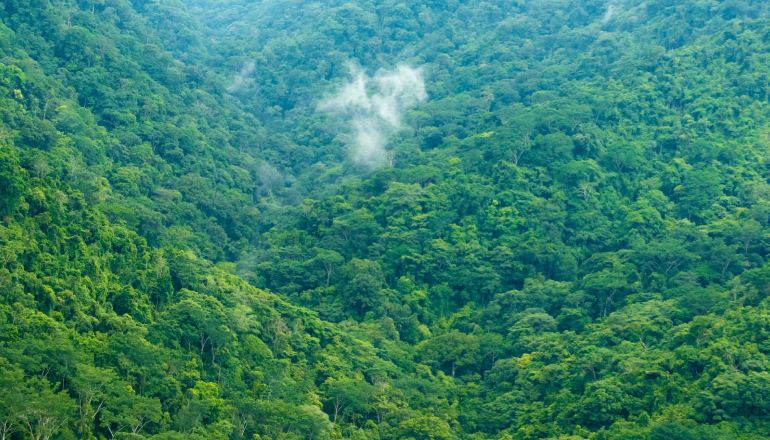At the onset, one cannot question the Indian government’s intent to preserve biodiversity.
However, on the other hand, the Union Ministry for Forest, Environment and Climate Action has made amendments to the Forest Conservation Bill. With this, the GoI is sending out a conflicting message on how it wants to preserve the precious and rare species of biodiversity in the country.
I am laying emphasis on the bill amendment because it was one of the topics that caught my attention in the last one month. The Lok Sabha passed the Biodiversity Diversity (Amendment) Bill, 2021, and Forest Conservation (Amendment) Bill on July 25. A subsequent, unrelated highlight is Bhagalpur which will be the first city in Bihar to have its ‘City Biodiversity Index.’
Amendments
As per the government, the bill would enable the commercialisation of Indian medicine systems, allow the cultivation of wild medicinal plants and draw foreign investment in the sector. On the other hand, critics have started raising their voices, fearing the exploitation of bio-resources.
Bhupendra Yadav, Union Minister for Environment, Forests, and Climate Change, stated that the revisions are intended to ameliorate the climate change disaster under the Paris Climate Accord 2015. “The new amendment will promote ease of doing business, support research and cooperation, while mitigating the triple crisis of climate change, desertification, and loss of biological resources.”
A closer examination of the modifications, however, reveals that they could lead to widespread exploitation of bio-resources, encourage bio-piracy, and damage the rights of its conservators or holders.
Uttarakhand, a state which has 71% of its area covered as forests and one of the states that saw major climate-related distorters in the recent past, was the first one to raise its voice. Forests in this state are particularly managed by over 12,000 Van Panchayats, the oldest community-based forest management system. Indigenous groups, environmentalists, eminent scientists, military personnel, and retired civil servants also came forward against watering down the existing law that gave more power to preserving biodiversity.
While structuring the Policy takes its own time and process, let us look at what we can do as individuals.
The truth is biodiversity in many parts of the globe is declining beyond calculations. Human life and biodiversity are intertwined. Impacts of biodiversity decline, climate change, unsustainable land use and inequitable extraction of natural resources have degraded the quality of human life.
There are measures that are focused on arresting the loss of biodiversity and erosion of the ecosystem. What is alarming is that erosions have a direct impact of the quality of human lives.
Take the case of India. < 5% of the country’s land is effectively protected for conservation. What does this mean—- calls for a more judicious approach in conservation with land sharing and land-sparing mix in inhabited areas. There are studies show that the share of land for conservation can be increased. However, India being the most populous country and with a growing population, it may not be an easy task.
That is where the relevance of Biodiversity Conservation through policies and laws gain significance.
City Biodiversity Index
As I stated in the beginning, the news of Bhagalpur in Bihar to have its ‘City Biodiversity Index’ (CBI) gives me a breather. This will be the 16th city in India to have developed CBI. The CBI, also known as the Singapore Index, is a unique index designed exclusively for monitoring and assessing biodiversity in urban areas. It includes 23 different biodiversity indicators, such as current conservation initiatives, government support, and schemes aimed at improving biodiversity. A total of 92 marks are allocated for the 23 indicators that make up the index.
The Bihar State Biodiversity Board (BSBB) approved a proposal pertaining to the development of the City Biodiversity Index for Bhagalpur because of its rich biodiversity.
In an interaction with the news agency PTI BSBB Secretary, K Ganesh Kumar said, ”The development of the CBI will help to improve the score of Bhagalpur in the Climate Smart Cities Assessment Framework. The results will also help Bhagalpur to improve the native biodiversity, ecosystem services, governance and management of biodiversity. This will, in turn, help to augment urban services, thereby improving the overall quality of life in the city.”
Bhagalpur’s Kadwa Diara floodplains area is the third-most-popular breeding centre for the greater adjutant stork, locally known as ‘Garuda’, in the world after Assam and Cambodia. Interestingly Mr Kumar highlighted the role of the role of local communities in protecting the species.
This is undoubtedly the best example of how intertwined the biodiversity-ecosystem and human lives. And also how the local communities conserve, preserve and protect the ecosystem that they live in. A good session that should be copied.

